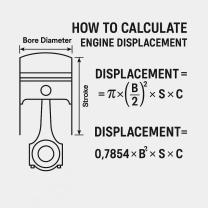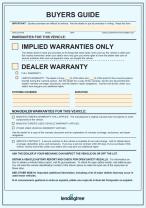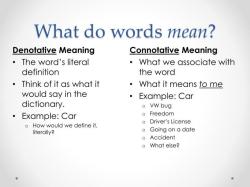What is included in a bodywork condition report?
A bodywork condition report is a detailed document that assesses the current state of a vehicle’s exterior — especially its body panels, paint, and structural components. It’s commonly used during vehicle inspections, repairs, sales, or insurance assessments.
Here’s what is typically included in a bodywork condition report:
1. Vehicle Identification
Make, model, year
Vehicle Identification Number (VIN)
Registration/license plate number
2. Overall Exterior Condition
General description of the vehicle’s body condition
Notes on cleanliness and maintenance level
3. Detailed Panel-by-Panel Inspection
Condition of each body panel (doors, fenders, hood, roof, trunk, bumpers)
Presence of dents, scratches, rust, corrosion, or paint fading
Any signs of previous repairs or repainting (color mismatches, overspray)
4. Structural Integrity
Checks for frame damage or misalignment
Signs of accident damage or repairs affecting vehicle safety
5. Glass & Trim
Condition of windows, windshield, mirrors (cracks, chips)
Condition of moldings, trims, badges, and seals
6. Lights & Indicators
Condition and functionality of headlights, tail lights, indicators, reflectors
7. Wheels & Tires
Condition of rims (dents, scratches)
Tire wear and damage
8. Photographic Evidence
Photos documenting key issues or overall condition
9. Recommendations
Suggested repairs or maintenance
Estimated costs if applicable
10. Inspector Details
Name, date, and signature of the person conducting the inspection
This report helps buyers, sellers, insurers, and repair shops understand the vehicle’s condition and plan accordingly.
Here’s a clear and simple Sample Bodywork Condition Report Template you can use or customize:
Bodywork Condition Report
Vehicle Information
Make & Model: __________________________
Year: __________________________
VIN: __________________________
License Plate: __________________________
Date of Inspection: __________________________
Inspector Name: __________________________
1. Overall Exterior Condition
General Description:
2. Panel-by-Panel Inspection
| Body Panel | Condition (Good / Dent / Scratch / Rust / Repainted) | Comments (Location, Size, Severity) |
|---|---|---|
| Hood | ||
| Front Left Door | ||
| Front Right Door | ||
| Rear Left Door | ||
| Rear Right Door | ||
| Left Fender | ||
| Right Fender | ||
| Roof | ||
| Trunk / Tailgate | ||
| Front Bumper | ||
| Rear Bumper |
3. Structural Integrity
Frame Condition: ____________________________________________
Signs of Accident Damage: __________________________________
Notes: ______________________________________________________
4. Glass & Trim
Windshield: _______________________________________________
Windows & Mirrors: _________________________________________
Trim & Seals: ______________________________________________
5. Lights & Indicators
Headlights: _______________________________________________
Tail Lights: _______________________________________________
Indicators: ________________________________________________
6. Wheels & Tires
Rim Condition: ____________________________________________
Tire Condition (Tread Depth, Damage): ______________________
7. Photographic Evidence
(Attach photos of all damages and overall vehicle)
8. Recommendations
Repairs Needed: ___________________________________________
Estimated Costs (if known): _________________________________
9. Inspector Signature
Name: __________________________
Signature: ______________________
Date: __________________________
A bodywork condition report is a document used by massage therapists, physical therapists, and other bodywork professionals to record a client's physical state before and after a session. The report helps practitioners plan a course of treatment, track progress, and communicate with other healthcare professionals.
What Is Included in a Bodywork Condition Report?
A comprehensive bodywork condition report includes a variety of details to provide a full picture of the client's health.
Client Information: This includes the client's name, age, contact information, and date of the report.
Health History: Any relevant medical conditions, injuries, surgeries, allergies, or medications.
Initial Assessment: The therapist's evaluation of the client's current physical condition, including posture, range of motion, and pain levels.
Treatment Plan: The specific techniques and goals for the bodywork session.
Session Notes: A detailed record of what was done during the session, including areas of focus and client feedback.
Progress and Recommendations: A summary of the client's progress over time and suggestions for future sessions or at-home care.
2. How to Assess a Client’s Physical Condition?
Assessing a client's physical condition is a crucial first step in creating a treatment plan. The process often involves both objective and subjective evaluations.
Subjective Assessment: This is based on what the client tells you. It includes asking about their pain level (often on a scale of 1-10), the location and quality of the pain, their medical history, and their goals for the session.
Objective Assessment: This is what the therapist observes. It includes a visual analysis of the client's posture and gait, palpation to check for muscle tension, trigger points, and tissue texture, and performing tests to measure their range of motion.
What Are Key Observations to Note?
When performing a physical assessment, several key observations should be meticulously noted in the report:
Postural Imbalances: Note any deviations from ideal posture, such as rounded shoulders, a forward head position, or a pelvic tilt.
Muscle Palpation: Document areas of tightness, knots, or trigger points. Note the texture and temperature of the tissue.
Range of Motion: Record limitations in the client's movement, specifying which joints and movements are restricted.
Pain Response: Note where the client feels pain, what movements cause it, and its intensity.
Client's Affect: Note the client's general demeanor, such as their stress level or emotional state, as these can influence physical tension.
How to Document Treatment Progress?
Documenting progress is essential for showing the value of the therapy and for adapting the treatment plan as needed. You can do this by:
Comparing Assessments: Compare the initial assessment with subsequent ones. Has the client's range of motion improved? Has their pain level decreased?
Using a Rating Scale: Use a consistent pain scale or a subjective rating system (e.g., "feels much better," "slightly improved") to track changes over time.
Recording New Observations: Note any new issues that have arisen or any changes in the original condition.
Summarizing Each Session: After each session, write a brief summary of what was accomplished, the client's response, and the plan for the next appointment.
Why Is Accuracy Important in Condition Reports?
Accuracy is paramount in condition reports for several reasons:
Client Safety: Incorrect information could lead to a treatment plan that harms the client or exacerbates an existing condition.
Professional Responsibility: Accurate records are a sign of professionalism and can protect a practitioner in the event of a legal dispute.
Effective Treatment: Precise documentation allows a therapist to create a more effective, personalized treatment plan and track its success.
Communication: Accurate reports facilitate clear communication with other healthcare providers, ensuring the client receives coordinated and appropriate care.












